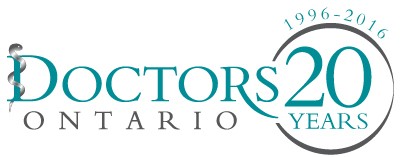Imagine, if you will, the following . . .
Your doctor calls you into his or her office, sits you down, and says: “I’m afraid I have some bad news for you. We’ve run out of health care, and as a result, we’re not going to be able to treat you and your family any longer. Now, have a nice day. And for God’s sake, don’t get sick.”
Impossible, you say. How could we ever run out of health care? And you’re right. It’s not health care we’ve run out of. It’s the money to pay for health care that’s in short supply. As a result, the government 38.7 per cent of Ontarians rewarded with a majority in the June 12 election will now be faced with some very difficult decisions.
They can raise taxes in order to pay for the health care needs of a growing and aging population. They can tack a couple more billion dollars on to the deficit—currently estimated to be $12.5 billion and rising. They can open the door to creativity and innovation, and allow for the introduction of a parallel private healthcare system, which would go a long way toward taking the pressure off our current system. To mention nothing of reducing wait lists.
Or they can start cutting and rationing. Government likes to call this “rationalizing” health care. Sometimes they say they’re “modernizing” the fee schedule. Or to use the current buzz words: we all must “choose wisely.”
Now, regular readers will know which side I’m on. I’m not in favour of the status quo, nor do I believe in perpetrating the myth that we actually have a healthcare system. What we really have is an insurance scheme—and a badly run insurance scheme at that. If we’re truly interested in fixing our current system, then government will need to allow us to have a parallel private healthcare system—one that lets doctors and clinics bill patients directly—like every other developed country in the world.
Unfortunately, that would take courage—something elected officials have shown, for the past several decades, they’re in short supply of.
What we’re likely to see instead are cuts, cuts and more cuts. Of course, the government won’t portray them that way. We’ll be told that changes to the OHIP fee schedule are all just part of the Ministry of Health and Long-Term Care’s “transformation” agenda.
By “investing” in things like more family health clinics and nurse practitioners—and even going so far as to pay doctors to keep patients out of hospitals—the government hopes to not only get healthcare spending under control, but also to keep their promise of ensuring every Ontarian has a healthcare provider by the end of their mandate.
That’s the plan anyway. And as those in charge will tell you, the plan is good.
Except it isn’t. Because by herding solo practitioner fee-for-service doctors into group practices, disguising our doctor shortage by bringing in nurse practitioners, and “incentivizing” doctors to keep the sick and elderly as far away from hospitals as possible—thereby rationing healthcare—the government is actually setting the table for a healthcare crisis, the likes of which we’ve never seen and can only imagine.
Look, I’ve been at this game for a long, long time—some 19 years—first as the Manager of Government Relations for the Ontario Medical Association and now as a consultant to DoctorsOntario. What I’m giving you is the straight goods. When it comes to healthcare, this government hasn’t got a clue.
Oh, they’ll make lots of announcements and appointments and set up a lot of august panels. Hell, they’ve even put two physicians—Dr. Eric Hoskins as Minister and Dr. Robert Bell as Deputy Minister—in charge of the Ministry of Health and Long-Term Care. They’ll tell you they were the first government in Canada to measure wait times—which is a long way from actually doing something about the problem—and that they’ve managed to hold the line on healthcare spending in the last three years. All of which is true.
But what they won’t tell you is what all these changes have cost you and your family in terms of your health and your pocketbook. Nor will they tell you what’s coming down the pike. But I will.
Rumour has it that as a result of the new Physician Services Agreement—currently being negotiated between Ministry of Health and Long-Term Care and the Ontario Medical Association—those doctors who are currently part of a family health team will receive a modest .25 per cent increase to their fees. Needless to say, this will be more than offset by inflation and the introduction of the new Ontario Retirement Pension Plan, which will cost each doctor an extra thousand dollars per year per employee. Solo fee-for-service dinosaurs will see their fees reduced drastically.
However, there will still be a way for doctors to pad their incomes. As soon as the ink is dry on their new agreement, watch for the government—in conjunction with the OMA—to announce a major new initiative. Doctors will not only be able to earn a “bonus” for keeping anyone over 65 years of age out of hospital, they’ll also be incentivised to develop end-of-life strategies for their patients and their loved ones.
You heard me right. The government will soon be paying doctors not to keep you and your family healthy and treat you when you’re sick, but instead they’ll be paid to keep you from bankrupting our healthcare system by going to the hospital or accessing healthcare.
I kid you not. Still glad you elected this bunch?
Stephen Skyvington is the President of PoliTrain Inc. He can be heard every Saturday at 1 p.m. on CFRB Newstalk Radio 1010. Follow him on Twitter @SSkyvington.
